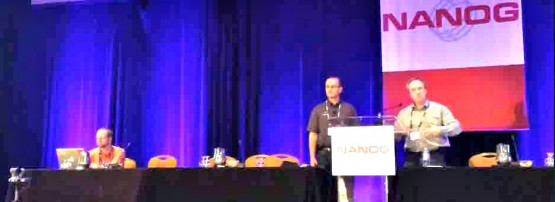
One view of the IETF’s positioning is that as a technology standardisation venue then the immediate circle of engagement in IETF activities is the producers of equipment and applications, and the common objective is interoperability.
What is the role of a technology standards body? Should it try and be all things to all people? Or should it try and maintain focus and resist pressures for change?
On the one hand is the risk of over-popularity leading to a lack of focus and losing traction with the traditional objectives of the standards body. On the other hand lies the risk of ossification and creeping irrelevance by closing the group to all forms of change and adaptation.
The Internet Society appears to have taken on an agenda of promoting the IETF to a wider audience within this industry, and Chris Grundemann of ISOC reported to the network operators and the recent NANOG meeting in San Antonio at the start of February on this effort. His presentation reported on a 2014 survey on IETF awareness and most survey respondents have heard of the IETF but they do not think that the work of the IETF is directly relevant to their work, and would not place participation directly in the IETF as a high priority for their time and efforts. Of course some would argue that this is as it should be – the task of technology standardisation is a specialist task, and while many folk consume products based on its standards, that does not mean that such consumers would helpfully participate in the process of forming such a standard.
The IETF has already dipped its toe into selective standardisation and the collective refusal to standardise NATs for many years led to a chaotic outcome where each vendor of a NAT product was forced to be creative as to how to implement the subtler parts of this technology.
While the IETF relented and eventually moved into this area with standard specifications, it was very late and the damage was done. NATs were a random element that applications have to cope with as best they can. These days the IETF is less selective as to what it standardises, and as long as the task is related to IP or a select subset of application, it appears that the only admission factor is one of sufficient drive to propel the proposal through what is these days a rather protracted review process. It does not seem to matter as much what the proposal is. (I’m still scratching my head over a current proposals in the IETF to standardize MPLS over UDP and the flooding of link state information using that well known distance vecor protocol BGP! It’s challenging to place such concepts within a more conservative view of the Internet architecture.)
Would more input, and particularly more input from network admins and operators help the IETF’s efforts? Would the process benefit from a broader set of inputs during the review stages of the development of a standard? Or do the community of network operators already play a role in the most critical part of any standards process – the acceptance of the standard by the market for products and services that use these standards?
Personally speaking, I am not sure I understand the problem that ISOC is trying to solve here by trying to pull these folk into the IETF’s technology standardisation process.
The views expressed by the authors of this blog are their own and do not necessarily reflect the views of APNIC. Please note a Code of Conduct applies to this blog.
